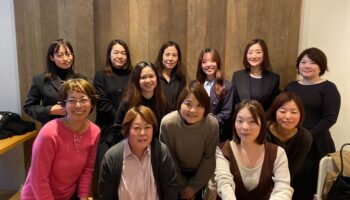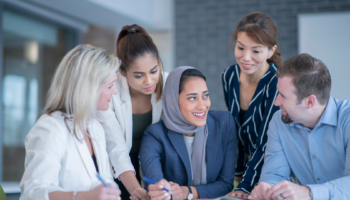This post is also available in: 日本語 (Japanese)
For the first time in history, we have 5 generations working together in the workforce. This melting pot of generations brings both challenge and opportunity to the forefront. From Baby Boomers to Gen Z, each cohort carries its own set of values, perspectives, and work styles, enriching the tapestry of organizational culture but also bringing a potential for challenges, when not navigated carefully.
Last month we delved deeper into this theme during our executive event in Tokyo, Japan, Adapting Work Environments for Multigenerational Success, with Mizuki Hsu, a Senior Manager of Global Diversity Equity and Inclusion at Asahi Group Holdings and Robert England, Executive Practice Leader from en world as the speaker. Read through to discover insights on how to embrace generational diversity in your workplace.
What are some of the circumstances that bring generational diversity to light?
With the older generations staying healthier than ever and many people deciding to have children at a later age, employees are now forced to stay in the workforce for much longer than before. Currently, in Japan 50% of people aged 65-69 are still in employment.
What kind of impact does this have on workplaces?
While this creates an opportunity for a lot of knowledge sharing when utilised properly, it can also bring potential threats to collaboration. As humans, we are wired to have biases about those who are different from us. In the case of generations, that might be a belief about the older generation not being tech-savvy or the younger generation being “lazy”.
How can we facilitate an inclusive environment that encourages collaboration and engagement between employees from different generations?
- Acknowledge the bias – it might be impossible to completely get rid of bias but it’s important to be aware of it and try to reduce it
- Stay consciously curious – we tend to stick with people who are similar to us (affinity bias). We need to make an intentional effort to stay curious about people from different backgrounds and to learn about them. If you don’t consciously include, you will unconsciously exclude
- Embed psychological safety – ensure that your workplace has a safe environment where everyone can openly share what they think without any repercussions
- Lead with an open mindset – To truly embed inclusive cultures you need to enable people who have very different backgrounds to you to feel like they can belong in the team and in the company as a whole
How can we have tailored work & development solutions to accommodate diverse lifestyles and needs of employees from different generations?
- Explore reverse mentoring – traditional mentoring will always be important but it is no longer just about younger people looking up, the older generations can also learn from the juniors
- Intentionally create opportunities for collaboration – especially in the era of hybrid and remote work, it is crucial to be intentional about creating time for people from different background to interact and learn from each other
- Make flexible solutions easy – providing flexibility can be a deciding factor in choosing a company for candidates, especially for the younger generations. The processes to acquire these need to be simplified as well, so that employees can take control with more autonomy and craft the way they want to work
How to embed generational diversity into your recruitment process?
- Don’t put too many restrictions on the role or they will become disablers. Especially in today’s competitive talent market, it’s important to be clear about who can do the role and who can potentially grow to be able to fill the role
- Review your hiring processes and consider factors such as flexible job requirements, use of inclusive language and whether your hiring managers are prepared to control the bias
Embracing generational diversity isn’t just a matter of ticking boxes; it’s about harnessing the collective wisdom and innovation that arise when different generations collaborate harmoniously. By fostering an environment of inclusivity and understanding, organizations can tap into the unique strengths of each generation, driving innovation, creativity, and ultimately, success.

Written By Bogna Baliszewska, Marketing Coordinator at TDC Global.





